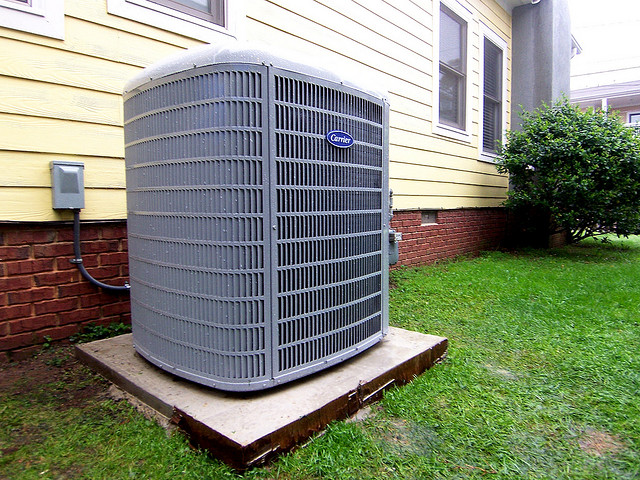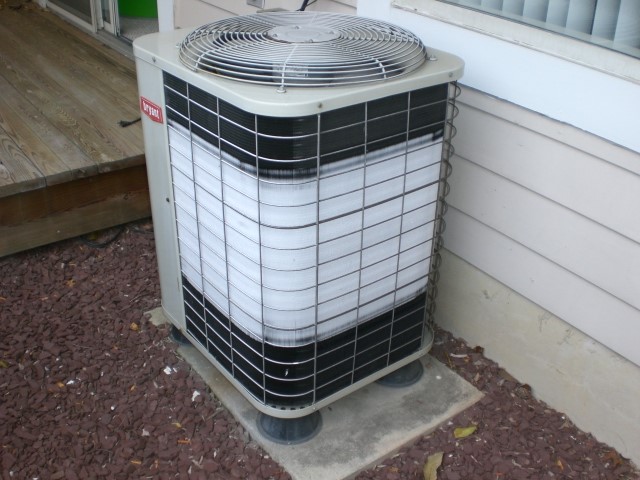
As temperatures rise globally due to climate change and urbanization, the need for efficient, sustainable cooling solutions has never been greater. Air conditioning (AC) has become a staple of modern life, keeping homes, offices, and public spaces comfortable in the heat of summer. However, traditional cooling systems, which rely heavily on electricity and often use harmful refrigerants, are facing increasing scrutiny for their environmental impact.
In response, air conditioning technology is undergoing a profound transformation. Innovations in energy efficiency, alternative refrigerants, and smart technologies are reshaping how we cool our spaces. So, what does the future hold for air conditioning? Here’s a look at the key trends and advancements that are changing the landscape of cooling technology.
1. Greener Refrigerants: Tackling the Environmental Impact
One of the most significant concerns about traditional air conditioning systems is the use of refrigerants, particularly hydrofluorocarbons (HFCs), which have a high global warming potential (GWP). In fact, refrigerants account for a substantial portion of the carbon footprint associated with AC systems. To address this issue, new, environmentally friendly refrigerants are being developed.
The industry is moving toward natural refrigerants such as carbon dioxide (CO2), ammonia, and hydrocarbons (like propane). These options have much lower GWPs than HFCs and are often non-toxic, making them safer for both the environment and human health. For example, CO2 refrigerants, which have been used for decades in industrial refrigeration, are now being adapted for commercial and residential air conditioners.
In addition, there are more innovations in HFOs (hydrofluoroolefins)—a new class of synthetic refrigerants that are designed to break down more easily in the atmosphere, posing less of a threat to the ozone layer and contributing less to global warming. As regulations around refrigerants become stricter (e.g., the Kigali Amendment to the Montreal Protocol), these greener alternatives will become even more widespread.
2. Energy Efficiency: Reducing Consumption and Costs
Air conditioning systems are energy-intensive, and as global demand for cooling increases, the pressure to reduce energy consumption has never been more urgent. Fortunately, AC manufacturers are continuously working to enhance the energy efficiency of their products.
One of the key developments in this area is the rise of inverter technology. Traditional air conditioners use a constant-speed compressor that turns on and off to maintain the desired temperature. In contrast, inverter-driven systems vary the compressor speed to maintain a more consistent temperature, consuming less energy and providing greater comfort. These systems can reduce energy use by as much as 30% to 50%, offering significant cost savings in the long run.
Another exciting advancement is the integration of smart thermostats and IoT (Internet of Things) technology. These devices allow users to control their air conditioning systems remotely and program cooling schedules based on their daily routines. By optimizing usage, these smart systems can minimize energy waste, ensuring that cooling only occurs when necessary. Furthermore, AI-driven algorithms are now able to learn from user habits and adjust settings automatically, further boosting efficiency.
Even further, the push toward solar-powered AC systems is gaining traction. Solar energy is an abundant, renewable resource, and harnessing it to power air conditioning units is an attractive prospect. Solar-powered air conditioners use photovoltaic (PV) panels to convert sunlight into electricity, reducing reliance on the grid. As the cost of solar panels continues to fall, solar-powered cooling will become more accessible to homeowners and businesses alike.
3. Smart and Connected AC: The Age of Automation
As part of the broader trend toward smart homes and buildings, air conditioning systems are becoming increasingly connected. The integration of IoT technology allows AC units to communicate with other smart devices in the home, creating a seamless and efficient ecosystem.
Smart air conditioners can now sync with weather forecasting services, adjusting the cooling output based on real-time weather data. For example, if a heatwave is expected, the system may pre-cool the space in advance, ensuring comfort without excessive energy consumption. Additionally, many modern units come equipped with sensors that detect occupancy in rooms, adjusting the temperature accordingly to avoid wasting energy when a room is empty.
Moreover, remote control capabilities via smartphone apps or voice assistants like Amazon Alexa or Google Assistant provide users with greater convenience. Imagine being able to turn on your AC from your smartphone while you’re on your way home or adjusting the temperature via voice command when you walk into the room. This not only enhances comfort but also provides a level of control that traditional systems could never match.

4. Evaporative and Alternative Cooling Technologies
While air conditioning as we know it dominates the market, there is a growing interest in alternative, more sustainable cooling technologies. One of the most promising of these is evaporative cooling, which uses the natural process of water evaporation to cool the air.
Evaporative coolers, also known as swamp coolers, are particularly effective in hot, dry climates. They consume much less energy than traditional AC units because they don’t rely on refrigerants or compressors. Instead, they use water-saturated pads to cool the air, which is then blown into the living space. These systems are becoming more refined and efficient, with some new models using advanced materials and designs to increase their cooling capacity while keeping energy consumption low.
In addition, thermal energy storage systems are emerging as a potential solution to help offset the high demand for cooling during peak periods. These systems use ice or chilled water to store cooling capacity during off-peak hours (usually at night), which can then be used during the day when cooling demand is highest. This can help reduce the strain on the grid and lower electricity costs, making cooling more affordable and sustainable.
5. Building-Integrated Cooling: The Rise of Passive Cooling
Looking further into the future, there’s an increasing interest in building-integrated cooling solutions that aim to reduce or even eliminate the need for traditional air conditioning altogether. These solutions rely on the principles of passive cooling—using design features that naturally regulate temperature without the need for mechanical cooling systems.
For example, new building designs are incorporating better insulation, reflective materials, and natural ventilation to minimize heat gain and maximize airflow. Green roofs and walls are also gaining popularity, as they provide insulation, reduce the urban heat island effect, and absorb solar radiation. Additionally, thermal mass (materials that store heat during the day and release it at night) is being integrated into buildings to help maintain comfortable indoor temperatures.
Passive cooling techniques are particularly effective in temperate climates but are also being adapted to hot urban areas as part of sustainable building strategies. In the future, we may see entire neighborhoods designed with these cooling principles in mind, drastically reducing the need for energy-intensive air conditioning.
Conclusion: A Cooler, More Sustainable Future
The future of air conditioning is undoubtedly tied to advances in sustainability, efficiency, and smart technology. As climate change continues to fuel demand for cooling, the industry is responding with innovative solutions that reduce environmental impact, lower energy consumption, and enhance user comfort. Companies like Woodlands aircon servicing are playing a crucial role in ensuring air conditioning systems are well-maintained, helping to optimize performance and extend the lifespan of units while promoting energy savings and reducing overall carbon footprints.
Greener refrigerants, energy-efficient inverter systems, smart technologies, and alternative cooling methods like evaporative cooling are all contributing to a shift toward more sustainable cooling solutions. Additionally, passive cooling techniques and building-integrated cooling systems are paving the way for a future where air conditioning is no longer the primary means of staying cool.
While challenges remain—particularly in ensuring accessibility and affordability—these advancements offer hope for a cooler, more energy-efficient world. As technology continues to evolve, air conditioning will not only be more environmentally friendly but also more integrated into our daily lives, providing comfort in a way that is both intelligent and sustainable. The future of cooling is bright, and it’s getting greener every day.

